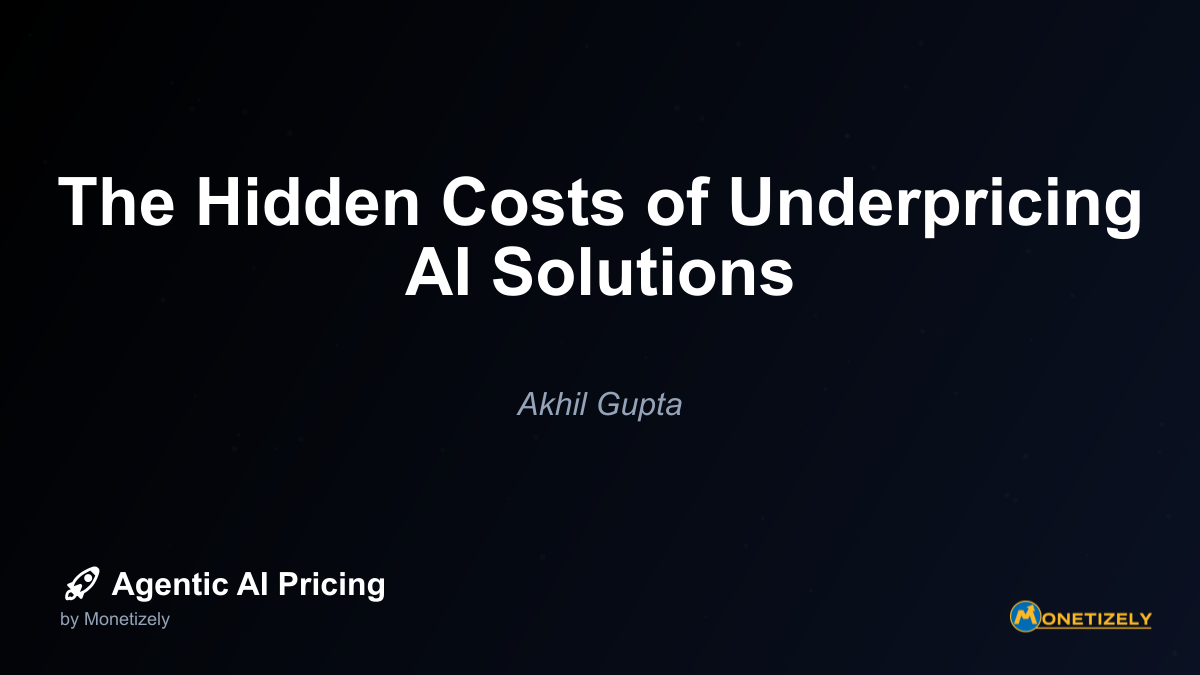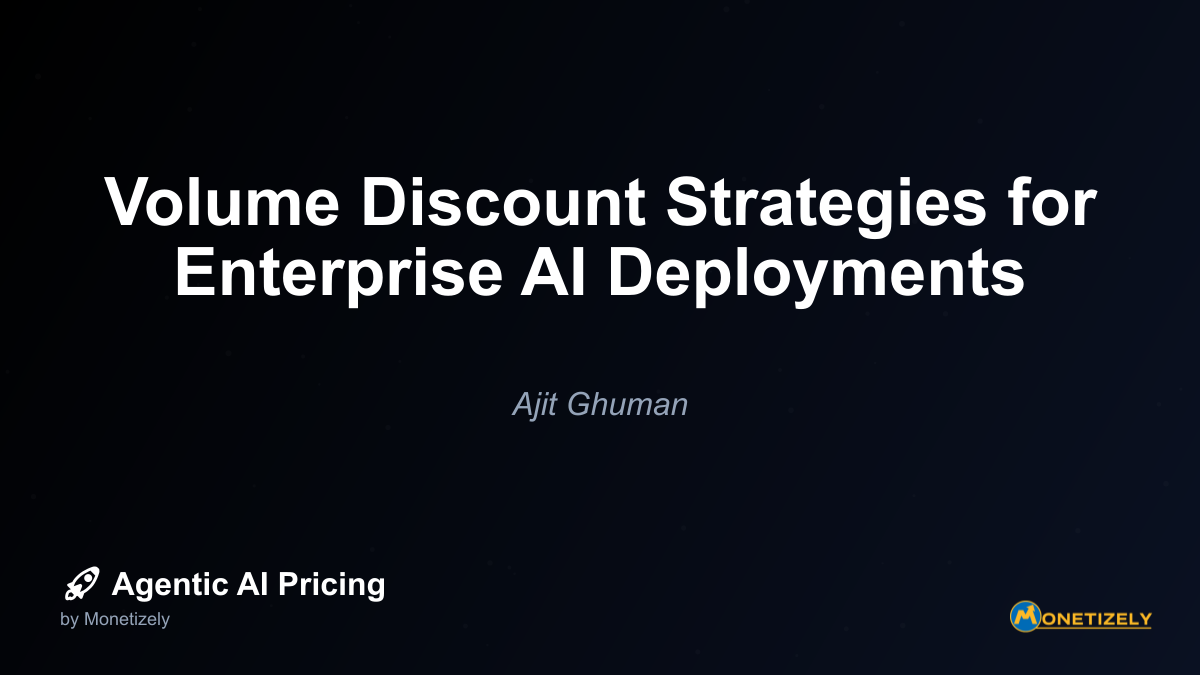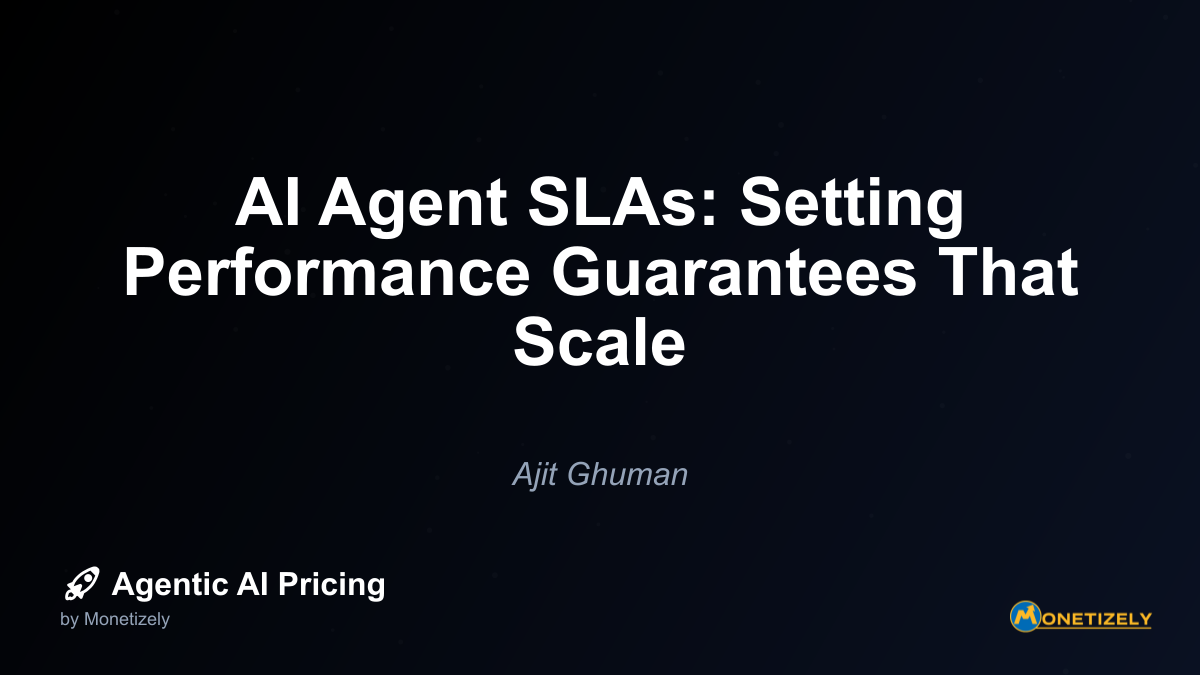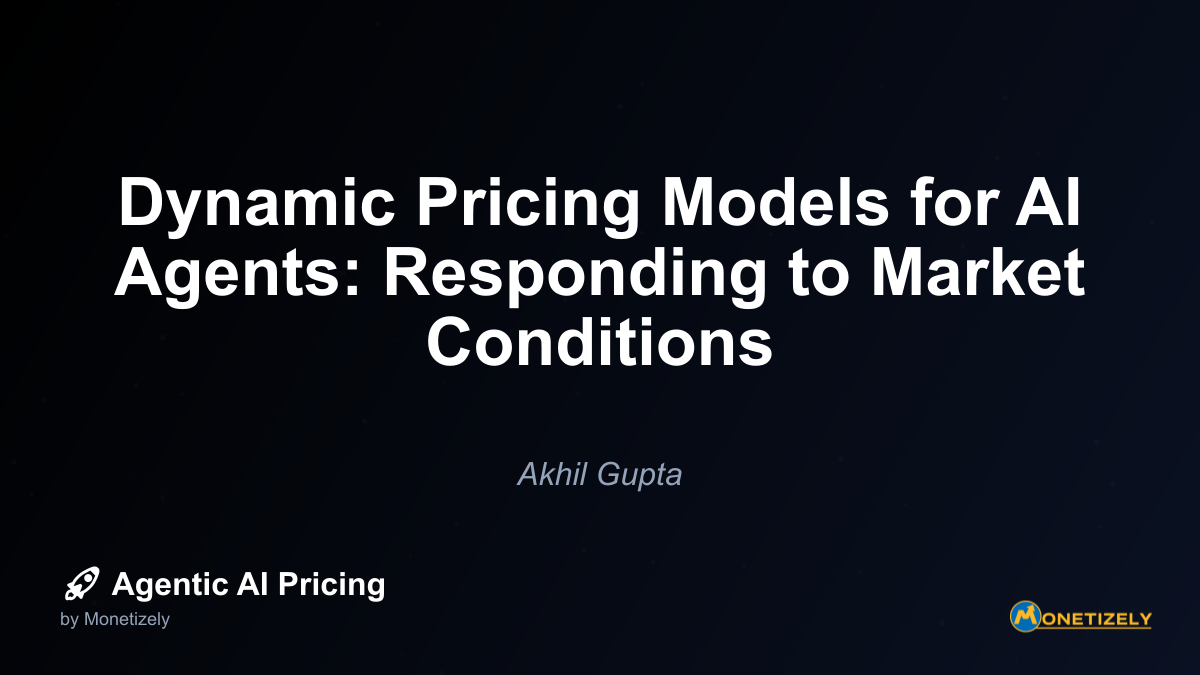· Akhil Gupta · Distribution · 14 min read
Pricing AI Solutions Through Channel Partners and Resellers
AI and SaaS Pricing Masterclass
Learn the art of strategic pricing directly from industry experts. Our comprehensive course provides frameworks and methodologies for optimizing your pricing strategy in the evolving AI landscape. Earn a professional certification that can be imported directly to your LinkedIn profile.
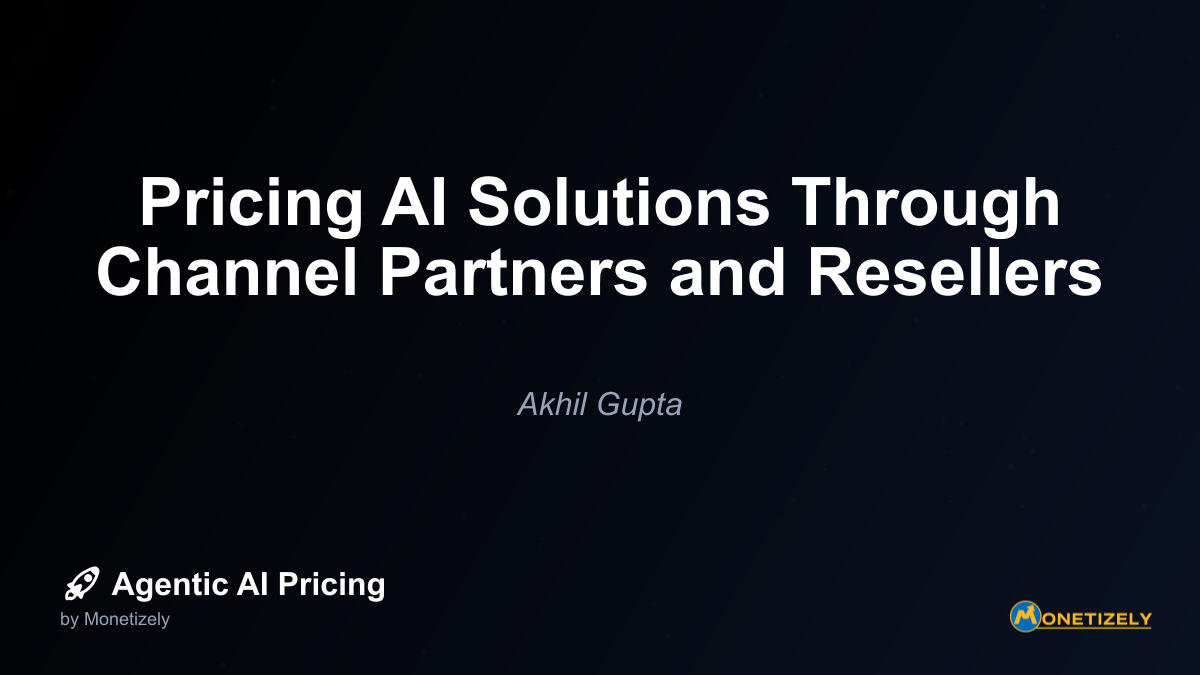
In today’s rapidly evolving AI landscape, selling sophisticated AI solutions through channel partners and resellers presents unique challenges for maintaining margins and value perception. As AI adoption accelerates across industries, vendors must develop strategic approaches to indirect distribution that protect profitability while enabling partners to effectively communicate AI’s value proposition.
The Shifting Economics of AI Distribution
The economics of AI solutions differ fundamentally from traditional software, creating new dynamics in channel relationships. Unlike conventional SaaS products with gross margins of 80-90%, AI startups typically operate with thinner 50-60% margins due to substantial infrastructure costs. This economic reality forces vendors and their channel partners to rethink traditional pricing approaches.
Recent market data reveals the scale of this shift: the percentage of channel partners offering AI/ML solutions surged from just 4% in 2022 to 29% in 2023, with projections reaching 34% by 2025. This rapid adoption has intensified competition in indirect sales channels, making strategic pricing more critical than ever.
The pricing models themselves are also evolving. Traditional seat-based pricing for AI products declined from 21% to 15% of companies in a recent 12-month period, while hybrid models combining usage and outcome metrics rose dramatically from 27% to 41%. This shift reflects the industry’s broader move toward pricing structures that more accurately align with AI’s cost structure and customer value delivery.
Channel Pricing Strategies for Margin Protection
Maintaining healthy margins when selling AI through indirect channels requires deliberate strategies that account for AI’s unique cost structure while preserving partner incentives. Several approaches have proven effective:
1. Tiered and Premium Pricing for AI Capabilities
AI vendors can maintain margins by offering AI capabilities as premium add-ons or higher-priced tiers, reflecting the substantial compute costs involved. This approach acknowledges AI’s value while ensuring adequate compensation for its delivery costs.
Microsoft’s $30 Copilot add-on and OpenAI’s $200 ChatGPT Pro plan exemplify this strategy. By positioning AI as a premium offering, vendors establish price points that protect margins while clearly communicating enhanced value to end customers.
For channel partners, these premium tiers create opportunities to earn higher commissions while focusing sales conversations on value rather than cost. The key is establishing clear pricing governance to prevent excessive discounting that erodes margins.
2. Usage- and Outcome-Based Models
Usage- and outcome-based pricing models have emerged as powerful tools for aligning AI costs with customer value. These approaches enable channel partners to demonstrate clear ROI to customers while maintaining margins that reflect actual resource consumption.
Highline Warren, a manufacturer and distributor in the aftermarket auto industry, successfully implemented AI-powered pricing to harmonize prices across multiple ERP systems and channels. This approach enabled real-time price optimization and improved price execution by sales teams, creating greater pricing discipline and margin insight while integrating complex channel data seamlessly.
However, implementing these models through indirect channels introduces complexity. Research shows that while customers increasingly prefer to pay for measurable outcomes, 47% struggle to define those outcomes, and 36% worry about cost predictability. This creates challenges for channel partners attempting to sell value-based AI solutions without eroding margins.
To address these concerns, vendors must:
- Provide partners with clear frameworks for defining and measuring outcomes
- Offer tools that help customers predict costs under usage-based models
- Develop hybrid approaches that balance predictability with value alignment
3. Dynamic, Data-Driven Pricing Optimization
AI-powered pricing optimization tools represent a powerful strategy for protecting margins in indirect channels. By analyzing market data, competitor pricing, and customer behavior, these tools enable partners to adjust prices in real-time to optimize margins while remaining competitive.
Hypersonix AI clients across furniture, food & beverage, apparel, and health & wellness categories have leveraged AI to improve price accuracy and competitor alignment while protecting margins. One U.S. furniture brand improved price accuracy by 43%, protecting margins on key SKUs without losing competitiveness through AI-driven benchmarking and price precision.
For channel partners, these tools create opportunities to:
- Eliminate mismatched price benchmarks across channels
- Reduce pricing errors that erode margins
- Optimize pricing based on real-time competitive intelligence
- Adjust strategies based on actual customer willingness to pay
4. Packaging Strategies: Incremental vs. Inclusive
When introducing AI capabilities, vendors face critical decisions about whether to sell these features as add-ons or embed them into existing products. Each approach carries different implications for margin protection and value perception in indirect channels.
Incremental packaging (selling AI as an add-on) allows vendors to:
- Preserve margins by charging explicitly for AI’s higher delivery costs
- Create upsell opportunities for partners
- Clearly differentiate AI’s value proposition
However, this approach risks reducing value perception if customers see AI as merely a bolt-on feature rather than an integral part of the solution.
Inclusive packaging (embedding AI into existing products) can:
- Simplify messaging and reduce sales friction
- Enhance perceived value of the core offering
- Reduce complexity in partner training and enablement
The downside is potential margin pressure unless base prices are adjusted to reflect AI’s higher costs.
Successful vendors typically adopt hybrid approaches based on market maturity and competitive positioning. For example, Salesforce’s strategy of embedding basic AI capabilities while charging premium prices for advanced features balances accessibility with margin protection.
Partner Program Design for AI Solutions
Designing effective partner programs for AI solutions requires balancing margin protection with partner enablement and motivation. Several key elements distinguish successful AI partner programs:
Tiered Partner Programs with AI Specialization
Effective partner programs for AI solutions typically feature tiered structures that reward investment, expertise, and performance. Adobe’s model provides a useful template:
- Registered partners receive a base discount (e.g., 15%)
- Partners with advanced certifications earn additional margin benefits (5-10% extra)
- Specialized tracks target key vertical markets with even higher margins
- Incentives such as first-year bounty commissions (e.g., extra 10%) motivate initial sales
For AI specifically, tiers might be based not just on revenue or certification but also on AI solution specialization, deployment capabilities, or customer success outcomes. This approach fosters partner loyalty and higher performance while ensuring that partners who invest in AI expertise receive appropriate compensation.
Differentiated Pricing by Partner Type
Different types of channel partners engage with AI solutions in distinct ways, requiring tailored pricing approaches:
Value-Added Resellers (VARs) typically resell packaged AI solutions with some customization or integration. Pricing can include tiered discounts with margins reflecting reselling effort, a subscription or license fee model, sometimes combined with feature-based pricing tailored to customer size.
Managed Service Providers (MSPs) often price on a usage or consumption basis because they manage ongoing AI operations for customers. They may receive volume-based rebates or incentives reflecting ongoing consumption growth, aligning their interests with the vendor’s desire for expanded usage.
Systems Integrators (SIs) provide deep custom AI implementations, so pricing often includes service fees plus seat and usage fees. SIs might get higher upfront margins for services or special pricing on APIs and deployment tools to enable customization.
Differentiating price by partner type means tailoring discounts, incentives, and pricing models to how the partners engage with the AI product lifecycle—resale, managed service, or custom integration.
AI-Specific Channel Enablement
Channel enablement for AI solutions differs significantly from traditional software, requiring specialized approaches:
Outcome-focused training: AI partners need education on performance metrics, data handling, and ethical AI use beyond basic software functionality. This training helps partners articulate value propositions that justify premium pricing.
Technical enablement at scale: Because AI solutions may require configuring models, APIs, and data pipelines, enablement programs must include technical workshops and sandbox access to lower partner onboarding friction.
Usage monitoring tools: Partners benefit from dashboards and alerts to track AI consumption (API calls, compute time) to optimize customer deployments and pricing. These tools help partners manage costs while demonstrating value.
Customer success emphasis: AI adoption typically demands more hand-holding and change management, requiring partners to have skills in training, AI explanation, and iterative deployment.
Hybrid pricing understanding: Channels must learn complex AI pricing mixes (subscription + consumption + outcome-based fees) compared to simpler license models in traditional software.
Managing Training and Education Costs
Because AI demands continuous learning and technical skill, vendors usually adopt specific approaches to handle education costs:
- Invest in certification programs to ensure competency, often monetized partially or offered free at basic levels with advanced paid tracks
- Provide co-funded training initiatives to share costs with partners, sometimes subsidizing early partner onboarding to accelerate ecosystem growth
- Leverage digital enablement platforms with on-demand courses, demos, and sandbox environments to minimize instructor-led costs
- Include training and support costs in the overall pricing strategy to maintain margin, for example through differentiated partner margin tiers or service fees
- Monitor partner learning progress as a key success metric to justify ongoing investment in enablement
Contractual Frameworks and Governance
Effective channel pricing for AI requires robust contractual frameworks and governance mechanisms that protect margins while enabling partner success.
Pricing Policies and Special Pricing Authorities
Clear pricing policies help maintain price integrity and support competitive positioning in indirect channels. Key elements include:
- Minimum advertised prices (MAP) that protect brand value and margin floors
- Discount authorization processes that prevent excessive discounting
- Special pricing authorities (SPAs) that allow flexibility for competitive situations while maintaining control
Highline Warren’s implementation of PROS AI-powered pricing demonstrates how these policies can work in practice. The company established clear visibility into margin leakage and offered tailored price recommendations per product and channel, helping protect margins while maintaining competitiveness.
Addressing AI Consumption Costs
AI solutions often involve ongoing consumption costs that must be addressed in partner contracts. Effective approaches include:
- Clearly defining how consumption costs will be measured and allocated
- Establishing mechanisms for monitoring and reporting usage
- Creating frameworks for adjusting pricing as consumption patterns change
- Defining partner responsibilities for managing customer expectations around consumption
These provisions help align expectations for pay-per-use or consumption-based pricing models common in AI solutions, preventing margin erosion as usage scales.
Pricing Transparency in Multi-Tier Distribution
Pricing transparency suffers due to inconsistent pricing across various channel levels, creating conflicts and eroding trust. Research shows that 71% of partners in one study reported pricing inconsistency as a major challenge.
Multi-tier channels obscure visibility into margins, discounts, and consumption costs, making it difficult for vendors and partners to maintain consistent pricing and avoid channel conflict.
To address these challenges, vendors can:
- Implement AI-driven pricing tools and data analytics to track partner-specific sales activities and market conditions
- Establish clear MAP policies and discounting rules across direct sales and indirect channels
- Create transparent reporting mechanisms that provide appropriate visibility to all channel tiers
- Develop governance frameworks that manage pricing exceptions consistently
Global Considerations for AI Channel Pricing
As AI solutions expand globally, vendors must address regional variations in pricing, value perception, and regulatory requirements.
Regional Pricing Differences
AI vendors commonly adopt differentiated pricing frameworks to reflect regional market conditions. Three main models emerge:
Tiered Global Pricing: Consistent product tiers worldwide with adjusted prices by region based on market maturity and competitiveness. IBM Watson exemplifies this with up to 40% regional price variation.
Market-Specific Pricing: Unique pricing strategies tailored per country or market that consider local costs, competition, and demand. Microsoft’s Azure AI employs this approach with custom formulas reflecting local factors such as data center costs.
Hybrid Models: Combine global standard pricing tiers with localized pricing components for services or support. Google Cloud AI uses this to balance consistency and regional adaptation.
These approaches recognize that regions differ in market maturity, competition, and purchasing power, often leading to price variations of up to 40% or more.
Managing Currency Fluctuations
Fluctuating exchange rates pose revenue and margin risks for AI vendors and their partners. Strategies include:
- Implementing dynamic pricing algorithms that adjust prices in real-time or regularly based on currency movements and local demand changes to protect margins
- Incorporating predictive analytics and AI-driven forecasting to anticipate currency trends, enabling proactive price changes before significant impacts occur
- Using contractual arrangements to share currency risks with partners or invoice in stable currencies while adjusting local price equivalents dynamically
These approaches help maintain margin stability despite currency volatility, protecting both vendor and partner economics.
Cultural Differences in AI Value Perception
Cultural factors strongly influence how AI products and their pricing are perceived across regions:
- Some markets place a premium on AI quality, innovation, and brand reputation, willing to pay higher prices for advanced features
- Other regions may be more price-sensitive, especially emerging markets where affordability drives adoption
- Trust and familiarity with AI vary culturally, impacting perceived value; regions with less AI penetration might require different marketing and pricing communications to convey AI benefits effectively
Understanding these nuances informs price discrimination strategies and market-specific pricing adaptations, enabling partners to position AI solutions effectively in their local markets.
Measuring Success in AI Channel Pricing
Effective measurement of channel pricing success requires both traditional metrics and AI-specific indicators:
Partner-Focused Metrics
- Partner-sourced revenue growth (e.g., Adobe achieved 22% increase post-tier implementation)
- Partner satisfaction scores reflecting enablement and support effectiveness
- Certification attainment and training completion rates as proxies for partner readiness
- Margin achievement compared to targets across partner tiers and types
AI-Specific Metrics
- Usage volume of AI solutions sold (e.g., API calls, compute time, or conversations handled by AI agents)
- Customer outcome metrics tied to AI performance, such as task completion rates, cost savings, or improved efficiency delivered by the AI
- Price accuracy improvements (e.g., 43% increase in price precision for a furniture retailer), and reduction in price errors (41% reduction for a grocery brand)
- Adoption and utilization rates of AI pricing recommendations by channel partners
Business Impact Metrics
- Revenue increases attributable to AI solutions through channels
- Margin improvement (e.g., 134 basis points margin lift for foodservice distributors with Zilliant)
- Reduction in below-floor transactions indicating improved pricing discipline
- Price execution confidence by sellers reflecting effective enablement
These metrics help vendors assess the effectiveness of their channel pricing strategies and make data-driven adjustments to optimize both vendor and partner outcomes.
Case Studies in AI Channel Pricing Success
Several companies have successfully implemented channel pricing strategies for AI solutions, providing valuable lessons for others:
Highline Warren: Harmonizing Prices Across Channels
Highline Warren, a large manufacturer and distributor in the aftermarket auto industry, implemented PROS AI-powered pricing to harmonize prices across multiple ERP systems and channels. This enabled real-time price optimization and improved price execution by sales teams, creating greater pricing discipline and margin insight while integrating complex channel data seamlessly.
Key outcomes included:
- Improved pricing governance and discipline
- Greater visibility into margin leakage
- Enhanced price execution by sales teams
- Consistent pricing across channels reducing conflict
Hypersonix: Improving Price Accuracy and Margins
Hypersonix AI clients across categories (furniture, food & beverage, apparel, health & wellness) have leveraged AI to improve price accuracy, competitor alignment, and protect margins.
A U.S. furniture brand improved price accuracy by 43%, protecting margins on key SKUs without losing competitiveness through AI-driven benchmarking and price precision. Similarly, a grocery brand achieved a 41% reduction in price errors, directly impacting bottom-line performance.
These implementations demonstrate how AI can improve pricing at scale across complex distribution networks, benefiting both vendors and their channel partners.
Major Foodservice Distributors with Zilliant
Major foodservice distributors using Zilliant’s pricing and sales AI software achieved margin lifts and reduced below-floor transactions, demonstrating the capacity of AI to improve pricing at scale across complex B2B channels.
Specific outcomes included:
- 134 basis points margin lift
- Significant reduction in below-floor pricing exceptions
- Improved sales team confidence in pricing recommendations
- Enhanced ability to respond to competitive pressures while protecting margins
These results highlight the potential for AI-powered pricing tools to drive meaningful business outcomes through indirect channels.
Regulatory and Compliance Considerations
As AI solutions proliferate through channel partners, regulatory and compliance considerations become increasingly important:
Responsible AI Pricing
Responsible AI pricing demands transparency, fairness, and market relevance to comply with ethical standards and sustain buyer trust. As regulatory scrutiny on AI fairness grows, vendors must ensure their pricing strategies meet emerging standards.
This includes:
- Ensuring pricing algorithms do not lead to discriminatory or anti-competitive practices
- Continuously monitoring and recalibrating AI models to maintain fairness
- Documenting pricing decisions to support audit and compliance requirements
- Providing appropriate transparency to partners and customers about pricing methodologies
Data Privacy Compliance
Data privacy compliance is essential when sharing partner sales and customer data across multi-tier channels to observe pricing and consumption. Vendors must:
- Ensure compliance with regional data protection regulations like GDPR and CCPA
- Establish appropriate data sharing agreements with partners
- Implement data minimization and anonymization where appropriate
- Create clear policies for data retention and deletion
Documentation and Audit Trails
Documentation and audit trails for pricing decisions aid in meeting regulatory requirements and resolving channel disputes. Effective approaches include:
- Maintaining comprehensive records of pricing decisions and approvals
- Creating transparent processes for handling pricing exceptions
- Establishing clear escalation paths for resolving pricing conflicts
- Implementing regular audits to ensure compliance with pricing policies
Future Trends in AI Channel Pricing
Looking ahead, several trends will shape the future of AI channel pricing:
Increased Adoption of Dynamic Pricing
As AI becomes more embedded in workflows, expect wider adoption of multi-dimensional pricing models blending subscription, usage, and outcome pricing. These models will accommodate diverse customer preferences and cost structures while enabling partners
Co-Founder & COO
Akhil is an Engineering leader with over 16+ years of experience in building, managing and scaling web-scale, high throughput enterprise applications and teams. He has worked with and led technology teams at FabAlley, BuildSupply and Healthians. He is a graduate from Delhi College of Engineering and UC Berkeley certified CTO.
Pricing Strategy Audit
Let our experts analyze your current pricing strategy and identify opportunities for improvement. Our data-driven assessment will help you unlock untapped revenue potential and optimize your AI pricing approach.

